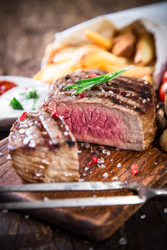 My mom owned a gourmet food catering and event company. So, throughout my life, I learned to appreciate and prepare great tasting food. I also learned to be creative when deciding which dishes would be most appropriate for which occasion. And finally, I learned the importance of the presentation. Anything that I prepared must not only taste amazing, but also look as delicious as it tastes.
My mom owned a gourmet food catering and event company. So, throughout my life, I learned to appreciate and prepare great tasting food. I also learned to be creative when deciding which dishes would be most appropriate for which occasion. And finally, I learned the importance of the presentation. Anything that I prepared must not only taste amazing, but also look as delicious as it tastes.
To fulfill those essential elements of a fine dining experience, there were several primary items to be considered:
Audience – who are they? Adults only or adults and children?
Atmosphere – what is the venue, i.e. wedding, business dinner, barbeque, etc.?
Palate – what are their tastes? Multi-course, main course or small bites only?
Size of the venue? How many people are being served?
Once I know the basics, then the fun and creativity begins; the possibilities are endless. With every dish prepared, there are always the base, starting point ingredients and everything else, such as spices, flavors, color, etc., are an addition and can be adjusted to meet specific tastes and personal preferences.
So what does the “paid up addition’s rider” have to do with all of this? To me, the paid-up additions rider is what gives the “plain old vanilla” whole life policy more pizazz, options, flavor and spice. But do keep in mind that without that “plain old vanilla” whole life policy, there would be nothing to add that flavor (paid-up addition or PUA rider) to. Together, they work perfectly and present a whole variety of options, depending upon each client’s circumstances (Audience, Atmosphere, Palate & Size).
Simply stated, a PUA is an additional premium paid to a whole life insurance policy in exchange for additional death benefits that are fully paid for with no additional premiums due. Additionally, those PUA premiums also add immediate cash value (living benefit) to the policy and are, actually, the primary source of the cash value, in the early years of your policy.
With each policy premium paid, your policy’s living benefits and death benefit increase in value, while your premium does not.
As an added bonus, PUA’s will not only give you guaranteed cash value and death benefits but will also earn dividends which can also purchase paid up additions. Yes, you heard that right! Dividends can increase your living benefits and death benefit.
So now the logical question is: how much PUA’s should you or can you pay? It would seem that if paid-up additions create cash value, additional death benefit and earns dividends, as well, it would make sense to pay as much of your total premium to paid up additions as possible, right? Not necessarily.
First of all, each insurance company has annual limits to the amount of PUA’s that can be added to each base policy’s premium. Secondly, the actual amount paid for PUA’s should be determined according to all of your personal factors and needs. It could be very easy to “over season” your policy with PUA’s and create unintended consequences, such as having to pay taxes on the growth in your policy when the cash values are used.
Therefore, it’s important to discuss your preferences – whether they are “super spicy or extra sweet” – with your advisor to assure your base PUA premium ratios are in keeping with your specific set of circumstances and intentions.
Your advisor can also make recommendations in accordance with individual insurance carriers specific guidelines and regulations. For example, some carriers require that the PUA is added at the time the policy is issued. For others, it may be added after the policy is issued but the insured would have to apply for the rider at their current health and age and subject to the carriers approval.
There are other variables that might be different from one insurance company to another, but your advisor will understand each secret recipe and determine what may fit your personal palate and present that to you.
So, how does all of this tie together? For me, everything can and does tie in with food and the similarities in its preparation. With insurance, specifically, it would be wise to consider all four of the same essential elements:
– Audience: Who will own the policy? Who will be the insured? Who will be the beneficiaries?
– Atmosphere: What is the venue? Retirement, asset protection, family banking or family legacy planning?
– Palate: What is the client’s primary objective? Quickest and most efficient accumulation of cash value for immediate use; long-term protection & liquidity; safety; privacy; tax benefits?
– Size of venue: Finances, single policy; multiple policies; size of each policy; age and health of each insured?
Bon Appetit.
Jennifer Steed






